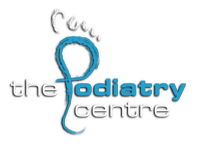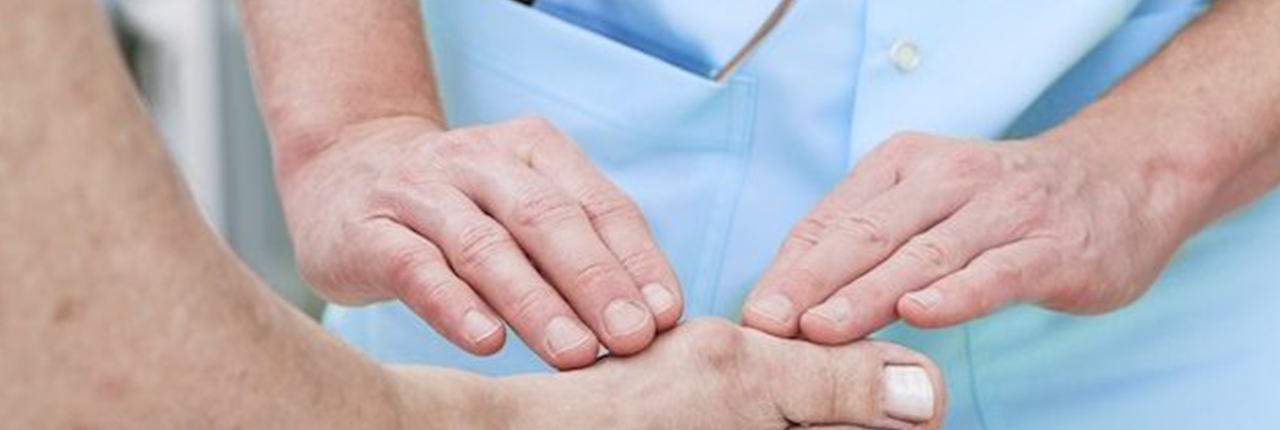Arthritis
Don’t let joint pain such as arthritis debilitate you when there are options to help you feel better.
What Is Osteoarthritis?
Osteoarthritis, or “wear-and-tear” arthritis, is the most common type of arthritis. Also known as degenerative joint disease or age-related arthritis, osteoarthritis is more likely to develop as people age. Inflammation and injury to the joint cause a breaking down of cartilage tissues, resulting in pain, swelling, and deformity. The changes in osteoarthritis usually occur slowly over many years, though there are occasional exceptions.
How Does Osteoarthritis Affect the Foot and Ankle?
Each foot has 28 bones and more than 30 joints. The following are the most common foot joints affected by osteoarthritis:
- The joint where the ankle and shinbone meet
- The three joints of the foot that involve the heel bone, the inner mid-foot bone, and the outer mid-foot bone
- The joint of the big toe and foot bone
What Are the Symptoms of Foot and Ankle Osteoarthritis?
- Tenderness or pain
- Reduced ability to move, walk, or bear weight
- Stiffness in the joint
- Swelling in the joint
How Is Foot and Ankle Osteoarthritis Diagnosed?
- A medical history in which the podiatrist asks questions about when and where the pain began
- X-rays
- Bone scans
- Magnetic resonance imaging (MRI)
How Is Foot and Ankle Osteoarthritis Treated?
Foot and ankle osteoarthritis can be treated in many ways. Nonsurgical methods to treat foot and ankle arthritis include:
- Anti-inflammatory drugs to reduce swelling in the joints
- Pain relievers
- Pads
- Orthotics that support the ankle and foot
- Physical therapy
- Custom shoes
- Weight
Tips on Foot Care With Osteoarthritis
The most essential element of foot care for people with foot and ankle osteoarthritis is to wear shoes that fit properly and feel comfortable. The following are things to look for in finding a comfortable shoe:
Shoes shaped like your foot
- Shoes that have support — for example, no slip-on shoes
- Rubber soles to provide more cushioning
- Flexibility
- Proper fit
If you have had painful joints due to osteoarthritis, there is usually something that can be done to reduce the pain so you can maintain an active lifestyle.
Osteoarthritis
What Is Osteoarthritis?
Osteoarthritis, or “wear-and-tear” arthritis, is the most common type of arthritis. Also known as degenerative joint disease or age-related arthritis, osteoarthritis is more likely to develop as people age. Inflammation and injury to the joint cause a breaking down of cartilage tissues, resulting in pain, swelling, and deformity. The changes in osteoarthritis usually occur slowly over many years, though there are occasional exceptions.
How Does Osteoarthritis Affect the Foot and Ankle?
Each foot has 28 bones and more than 30 joints. The following are the most common foot joints affected by osteoarthritis:
- The joint where the ankle and shinbone meet
- The three joints of the foot that involve the heel bone, the inner mid-foot bone, and the outer mid-foot bone
- The joint of the big toe and foot bone
What Are the Symptoms of Foot and Ankle Osteoarthritis?
- Tenderness or pain
- Reduced ability to move, walk, or bear weight
- Stiffness in the joint
- Swelling in the joint
How Is Foot and Ankle Osteoarthritis Diagnosed?
- A medical history in which the podiatrist asks questions about when and where the pain began
- X-rays
- Bone scans
- Magnetic resonance imaging (MRI)
How Is Foot and Ankle Osteoarthritis Treated?
Foot and ankle osteoarthritis can be treated in many ways. Nonsurgical methods to treat foot and ankle arthritis include:
- Anti-inflammatory drugs to reduce swelling in the joints
- Pain relievers
- Pads
- Orthotics that support the ankle and foot
- Physical therapy
- Custom shoes
- Weight
Tips on Foot Care With Osteoarthritis
The most essential element of foot care for people with foot and ankle osteoarthritis is to wear shoes that fit properly and feel comfortable. The following are things to look for in finding a comfortable shoe:
Shoes shaped like your foot
- Shoes that have support — for example, no slip-on shoes
- Rubber soles to provide more cushioning
- Flexibility
- Proper fit
If you have had painful joints due to osteoarthritis, there is usually something that can be done to reduce the pain so you can maintain an active lifestyle.
Rheumatoid Arthritis
Rheumatoid arthritis (RA) is an autoimmune disease that has a host of debilitating symptoms, including fatigue, joint pain, swelling, and stiffness of affected joints. With RA, the immune system attacks the body’s own joint tissues, resulting in inflammation, which can cause progressive damage to affected joints. The inflammation caused by RA usually affects specific joints and organs and sometimes causes skin and tendon problems. Two common areas affected by RA are the hands and feet, which can develop joint contractures and deformity over time. RA symptoms and effects on the body will vary from one person to the next — some RA sufferers may develop joint problems to more of a degree than others.Foot Problems That Can Occur with Rheumatoid Arthritis
- Joint Damage : When RA flares up, the fluid within a joint and the joint lining, known as the synovium, becomes acutely inflamed (synovitis). This inflammation is what causes the characteristic RA symptoms: a warm and swollen joint. What distinguishes RA from the more common osteoarthritis (OA) is that multiple joints are usually affected at the same time with RA and the joint symptoms are generally symmetrical, occurring on both sides of the body equally. When it come to the feet, RA typically affects the metatarsophalangeal (MTP) joints of the toes, resulting in a gradual deformity of the toes on both feet. Subsequent flares and chronic inflammation may cause progressive damage to joint structures, eroding cartilage and bone, which results in decreased range of motion and joint deformity. When RA persistently affects the MTP joints of the feet, a gradual outward (lateral) shift in the toes can occur. This causes both feet to develop bunions (hallux valgus). The shifting of the forefoot and loss of stability also causes toe contractures, such as hammertoes. Toe contractures and changes in toe joint flexibility will often lead to calluses and pain beneath the ball of the foot. All of these changes to a foot’s structure and shape can make finding a comfortable shoe more difficult for an RA sufferer.
- Heel Pain : Heel pain is a common recurring problem for RA sufferers and can occur at the back of the heel or on the underside.
- Nerve entrapments : RA causes inflammation of joint lining (synovitis) and fluid, which are present in joints and surround certain tendons. The swelling that occurs with synovitis can compress nerves, causing symptoms of a pinched nerve, also known as a nerve entrapment.
- Skin Problems : Some RA sufferers may develop rheumatoid nodules. A rheumatoid nodule appears as a lump beneath the skin, usually over a bony prominence or tendon. In the foot, a rheumatoid nodule may appear over the Achilles tendon or on the side of the big toe if a bunion (hallux valgus) is present.
The inflammation associated with RA can affect small blood vessels, which in turn can cause certain skin manifestations, including rashes or wounds on the lower legs. Another skin finding associated with RA is splinter hemorrhages, which are small areas of broken blood vessels that are usually seen on the sides of fingernails or toenails.
Join Pain Treatment
Although a podiatrist cannot provide a cure for the rheumatoid arthritis, they are able to implement management tools to reduce the discomfort caused by the rheuamatoid arthritis. Some of the common treatment include:
- Removal of any hard skin on the feet
- Applying padding on the inflammed joints
- Orthotics to reduce the pressure on the effected joints.
- Recommend shoes to best suit the condition of your feet.
- Recommend toe props and pslints to help reduce the deformity.
Gout
What is gout and what causes it?
Gout causes attacks of painful inflammation in one or more joints. It is a type of arthritis (although it is very different to the more common rheumatoid arthritis and osteoarthritis). The pain of a gout attack can be severe.
Gout is caused by a chemical in the blood called uric acid (urate). Uric acid is usually harmless, and is made in the body. Most is passed out with the urine, and some from the gut with the faeces (stools). In people with gout the amount of uric acid in the blood builds up. From time to time the level may become too high and tiny grit-like crystals of uric acid may form. The crystals typically collect in a joint. The crystals irritate the tissues in the joint to cause inflammation, swelling, and pain – a gout attack.
The big toe joint is often effected, and some of the obvious signs are:
- Sudden onset of pain
- Redness and swelling without an obvious injury
Gout attacks are limited in time, but can be very painful. They may re-occur if the uric acid is not controlled. Coomon forms of treating gout include oral medication. Prevention of gout attacks involve reducing foods and drinks that elevate the uric acid content such as seafood and alcohol.



